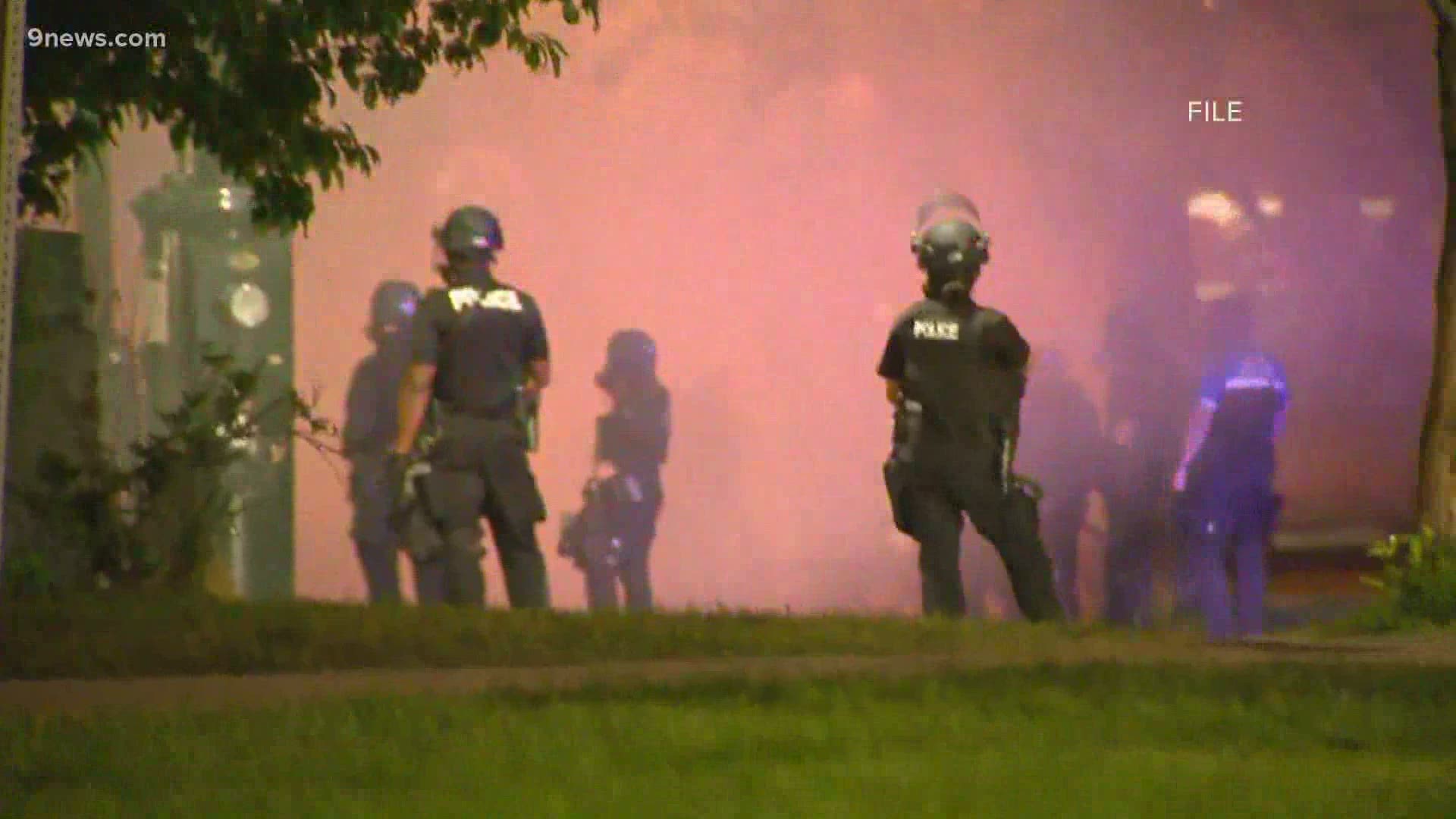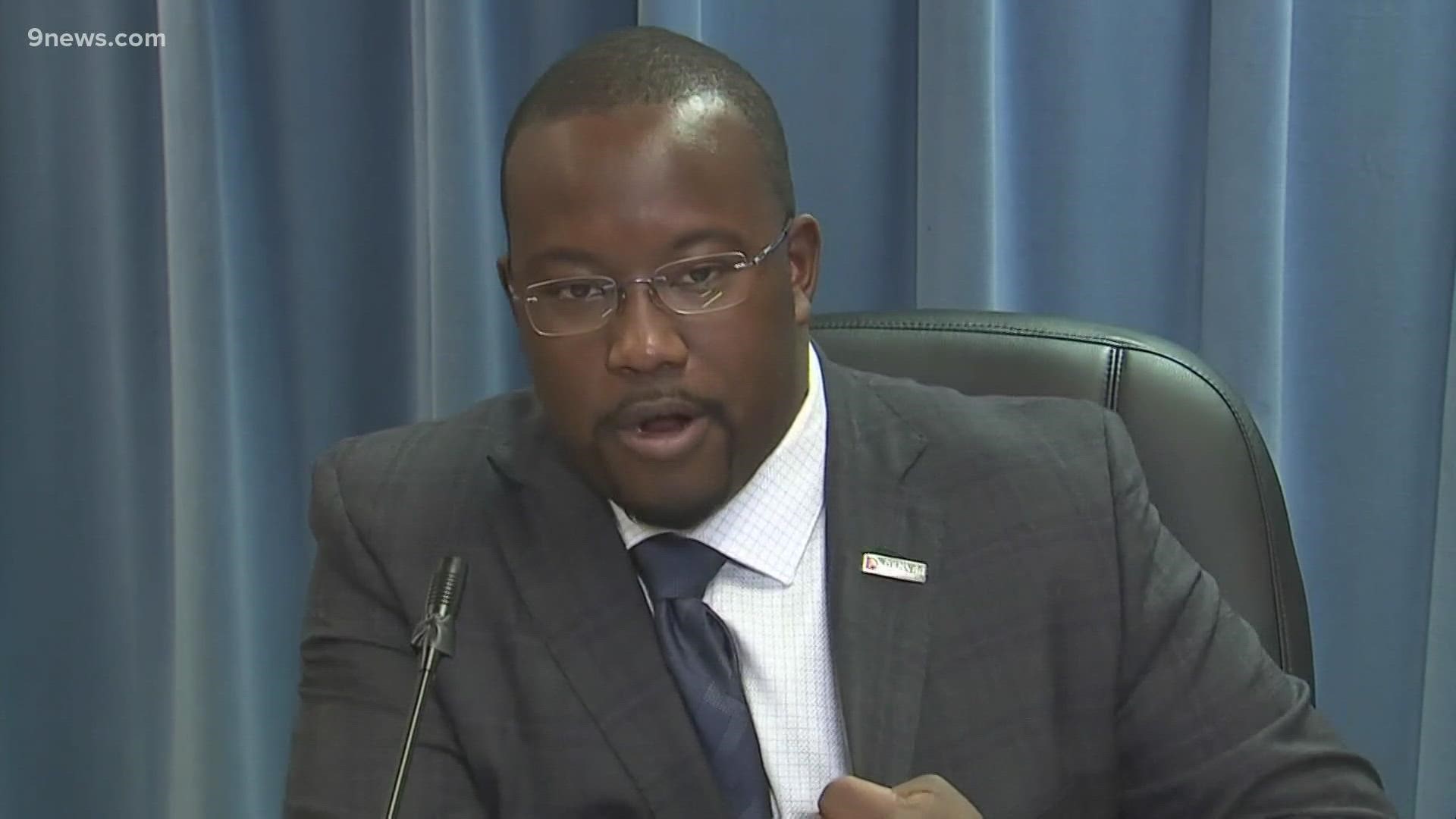DENVER — Banning the use of rubber ball grenades and requiring officers wear body worn cameras are among the recommendations of a report following an investigation into the Denver Police Department (DPD) officers' handling of the George Floyd protests in the city this past summer.
The city's Office of the Independent Monitor investigated DPD actions following the death of George Floyd in Minneapolis in May that sparked several weeks of anti-police protests in Denver.
The results of that investigation were made public Tuesday, and the report describes “significant gaps in DPD’s use of internal controls to help manage officer use of force during the protests.”
The 69-page report also describes in great detail the mistakes that DPD made in trying to control the sometimes violent protests in Denver following Floyd's death at the hands of several Minneapolis police officers.
> The video below aired June 4 and shows a photographer documenting protesters' encounters with Denver Police.
Among those mistakes, according to the report, was the fact that DPD officers used less-lethal munitions, like rubber ball grenades and 40-millimeter foam launchers, in ways that were “extremely troubling, such as at persons who were verbally objecting to police behavior and not engaged in apparent physical resistance.”
At least seven people plan to sue the city for serious injuries related to those launchers, and 50 plan to sue over injuries during the protests.
In addition, the report found that DPD did not effectively track the less-lethal munitions that were deployed, nor could they produce body worn camera video of many of the officers involved during the early days of the protests. As a result, the report says that DPD’s command staff was hindered in its ability to review, and perhaps adjust, DPD’s response to the protests as they were unfolding.
The report also expressed concern that DPD officers “received insufficient tactical and strategic direction in the field,” and pointed to the fact that DPD has not “made enough recent investments in crowd control and field force operations training to properly prepare officers for events like the George Floyd protests.”
The report concludes with 16 recommendations for DPD, from banning the use of rubber ball grenades during crowd control operations, to requiring that all DPD officers working in the field during protests wear body-worn cameras, to making sure that DPD supervisors issue “multiple dispersal orders before using force to disperse crowds, when time and circumstances permit.”
During a news conference on Tuesday afternoon, Denver's Executive Director of Public Safety Murphy Robinson and Police Chief Paul Pazen said they agreed with the recommendations and called the department unprepared for what were referred to as "unprecedented" protests and vandalism.
"Just because we haven’t seen anything like this in several decades, we need to make sure our teams are trained for any type of spontaneous, violent protests," Pazen said.
According to an email from the department, many of the changes recommended are slated to be implemented by January. Some have already been put in place in wake of police reform legislation that was passed over the summer.
The department also blamed the riot gear worn by officers for the lack of body camera footage, saying they didn't have a mechanism to mount the equipment or proper nametags. Pazen said the protests were what ultimately brought this to light.
“One of these challenges that we faced for the first five days was the fact protective gear did not lend itself to protecting body cams," Pazen said. “We also worked to rectify this situation by putting badge number tape on helmets.”
Pazen said DPD will post the OIM report's 16 recommendations to its website as well as a dashboard showing his department's progress in rectifying the issues in preparation for potential cases of unrest in the future.
“The simple answer is that [the protests] caught us off guard just like it got many cities across the country off-guard," Pazen said.
SUGGESTED VIDEOS: Protests in Denver


